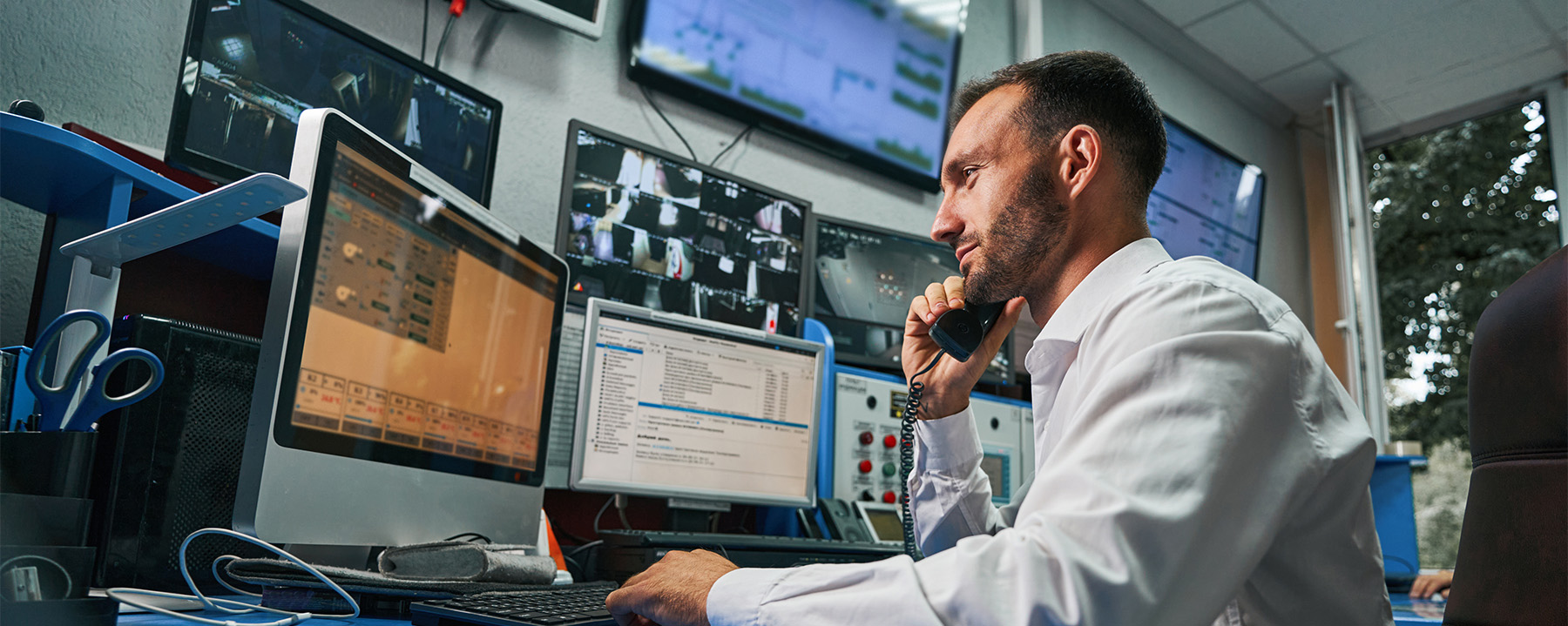
The continuity of business for the private organizations, or operations continuity for the public ones, has become utterly important, regardless of what, how and why organizations are operating. The evolution speed of the world is ever increasing, and organizations need to be able to match their way of working with the development speed of their business or operative environment. More and more, this concerns IT systems, digital services and cyber security.
From continuity planning to continuity implementation
Many organizations are already doing business continuity planning (BCP), operations continuity planning, or preparedness planning. This is typically done either as a voluntary planning step after risk management, or as mandated by laws and regulations. However, what too often remains to be done is to continue this planning step with implementation. Actually, if this well made continuity or preparedness plan never gets properly deployed as part of the organization’s operations, and furthermore, isn’t trained on a regular basis, the money and time put into the planning is an investment done in vain.
In order to properly implement these plans, they should be an essential part of the organizations business and operative processes, and furthermore, implemented as part of the organizations business or operational management systems. It is essential to ensure that the work done for improving preparedness is turned into actual management of unexpected situations, such as crisis or emergencies, when so needed. The closer the management of these situations is to the management of every day operations, the more efficiently the organization can recover.
Increased complexity needs to be managed
Nowadays organizations are increasingly either using services provided by other organizations, or providing services to other organizations to use. In more complex operative environments, there can be many different service providers in multiple service provisioning levels. In such environments, management and recovery activities need to be done in cooperation between these different service providers.
Unfortunately, the above mentioned business or operational management systems typically differ between the service providers, and without having a single and unified service to perform efficient management of, and recovery from, the unexpected situations tends to be a costly and time consuming activity. In many cases, implementing a new, efficient, and simplified planning, management and recovery system may be far more rational than trying to integrate all existing systems and services together.
Time is a luxury we do not have
Emergencies, crises and other unexpected situations are many, and happen more frequently than ever. Organizations need to be able to manage these situations more efficiently, to ensure the continuity of operations and business. For some organizations, they need to be able to manage situations in days rather than weeks, and for some, every second matters. This time spent on management and recovery cumulates, as do the costs. Unfortunately, in extreme cases, even human lives are in danger.
From physical to cyber-physical
Digitalization is the trend of development in many segments: Manufacturing is automated with IoT systems; Smart cities are implemented with capable sensors and data services developed over measurements; Healthcare services are provided more often remotely. Alongside the development of digital systems and services, the risks threatening these are also emerging in a digital, or in the cyber-physical environment.
Unfortunately these cyber-physical risks, or cyber threats, happen at an increasing frequency as well, and since we are more reliant on the features and functionality provided by digital means, every second matters even more. For example, according to IBM and Gartner, the average cost of IT system downtime is €5,750 per minute, or €96 per second, and the cost of a data breach is, on average, €3.93 million globally. The cost of loss of lives is beyond any monetary value.
Understand the situation in place
Finally, the management of unexpected situations and recovery from them depends on understanding the situation and its development over time. The better and more reliable the situational picture is, the better and more impactful the decisions made and actions taken. Furthermore, all communication about the state of the situation, either internal or external, is also improved when it is based on facts from the actual situation.
Naturally, in the cyber-physical environment, having a shared and reliable situational picture can remarkably improve both the management of, and the recovery from, these aforementioned cyber incidents.
Improved physical, operational and cyber resilience
Despite the challenges and threats mentioned above, there is a positive note: There are procedures and services that can be used to prepare for the next era of being prepared.
Services like Secapp can be used to improve preparedness or to plan continuity. It can be used as a service to manage everyday needs for secure communications, sharing of content and reaching people on and off duty. It can be used to manage crises, emergencies and other unexpected situations. All the communication and shared content can also be used to improve situational awareness.
And combining all previous, Secapp can be used to improve organizations’ resilience, not just in physical and operational, but also cyber environments.

Mika Kataikko
Account director

The continuity of business for the private organizations, or operations continuity for the public ones, has become utterly important, regardless of what, how and why organizations are operating. The evolution speed of the world is ever increasing, and organizations need to be able to match their way of working with the development speed of their business or operative environment. More and more, this concerns IT systems, digital services and cyber security.
From continuity planning to continuity implementation
Many organizations are already doing business continuity planning (BCP), operations continuity planning, or preparedness planning. This is typically done either as a voluntary planning step after risk management, or as mandated by laws and regulations. However, what too often remains to be done is to continue this planning step with implementation. Actually, if this well made continuity or preparedness plan never gets properly deployed as part of the organization’s operations, and furthermore, isn’t trained on a regular basis, the money and time put into the planning is an investment done in vain.
In order to properly implement these plans, they should be an essential part of the organizations business and operative processes, and furthermore, implemented as part of the organizations business or operational management systems. It is essential to ensure that the work done for improving preparedness is turned into actual management of unexpected situations, such as crisis or emergencies, when so needed. The closer the management of these situations is to the management of every day operations, the more efficiently the organization can recover.
Increased complexity needs to be managed
Nowadays organizations are increasingly either using services provided by other organizations, or providing services to other organizations to use. In more complex operative environments, there can be many different service providers in multiple service provisioning levels. In such environments, management and recovery activities need to be done in cooperation between these different service providers.
Unfortunately, the above mentioned business or operational management systems typically differ between the service providers, and without having a single and unified service to perform efficient management of, and recovery from, the unexpected situations tends to be a costly and time consuming activity. In many cases, implementing a new, efficient, and simplified planning, management and recovery system may be far more rational than trying to integrate all existing systems and services together.
Time is a luxury we do not have
Emergencies, crises and other unexpected situations are many, and happen more frequently than ever. Organizations need to be able to manage these situations more efficiently, to ensure the continuity of operations and business. For some organizations, they need to be able to manage situations in days rather than weeks, and for some, every second matters. This time spent on management and recovery cumulates, as do the costs. Unfortunately, in extreme cases, even human lives are in danger.
From physical to cyber-physical
Digitalization is the trend of development in many segments: Manufacturing is automated with IoT systems; Smart cities are implemented with capable sensors and data services developed over measurements; Healthcare services are provided more often remotely. Alongside the development of digital systems and services, the risks threatening these are also emerging in a digital, or in the cyber-physical environment.
Unfortunately these cyber-physical risks, or cyber threats, happen at an increasing frequency as well, and since we are more reliant on the features and functionality provided by digital means, every second matters even more. For example, according to IBM and Gartner, the average cost of IT system downtime is €5,750 per minute, or €96 per second, and the cost of a data breach is, on average, €3.93 million globally. The cost of loss of lives is beyond any monetary value.
Understand the situation in place
Finally, the management of unexpected situations and recovery from them depends on understanding the situation and its development over time. The better and more reliable the situational picture is, the better and more impactful the decisions made and actions taken. Furthermore, all communication about the state of the situation, either internal or external, is also improved when it is based on facts from the actual situation.
Naturally, in the cyber-physical environment, having a shared and reliable situational picture can remarkably improve both the management of, and the recovery from, these aforementioned cyber incidents.
Improved physical, operational and cyber resilience
Despite the challenges and threats mentioned above, there is a positive note: There are procedures and services that can be used to prepare for the next era of being prepared.
Services like Secapp can be used to improve preparedness or to plan continuity. It can be used as a service to manage everyday needs for secure communications, sharing of content and reaching people on and off duty. It can be used to manage crises, emergencies and other unexpected situations. All the communication and shared content can also be used to improve situational awareness.
And combining all previous, Secapp can be used to improve organizations’ resilience, not just in physical and operational, but also cyber environments.

Mika Kataikko
Account director





